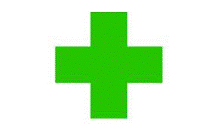Plant Health Program, Doctor of

Doctor of Plant Health Program: Dissertations and Student Research
First Advisor
Gary L. Hein
Date of this Version
5-2019
Document Type
Article
Abstract
From the earliest of times, the human race has sought to better understand this world and its surroundings. In the last century, aeronautical engineering and aerial imagery have evolved to allow a deeper understanding into how this world lives and breathes. Now more than ever, these two technological advancements are changing the way we view this world and how we are to sustain it for a brighter, healthier future.
Over time, the advances of these two technologies were combined and the birth of spectral sensing and drone technology arrived. In their earliest years, drones and spectral imaging were only available to government agencies. In the mid-1990s, President Clinton declassified this technology and allowed the public to utilize and invest in their development.
Today, the world has incorporated these technologies into a number of applications; one of these being in agriculture. In the last decade, significant interest into drone technology and its possible applications have been researched. Many benefits have been discovered in the agricultural sector by incorporating drone and spectral technology. A big part of incorporating a new piece of equipment or technology into any operation is the economic feasibility. Understanding drone and spectral technology can do and what it can provide, is crucial in making a sound decision when considering investing in drone technology.
This document discusses the earliest developments of drone technology, its current status, and the predicted future. It also provides basic information about drone designs, drone regulations, types of spectral sensors, their capabilities, and some of the research being done in agriculture to advance these technologies. Additionally, a case study looking at a wild oat infestation in spring wheat will be addressed. This case study involves two crop consultants and their decision to invest in drone technology.
Advisor: Gary L. Hein


Comments
A Doctoral Document Presented to the Faculty of The College of Agricultural Sciences and Natural Resources In Partial Fulfillment of Requirements For the Degree of Doctor of Plant Health, Under the Supervision of Professor Gary L. Hein. Lincoln, Nebraska : May, 2019
Copyright (c) 2019 Christopher Wynn